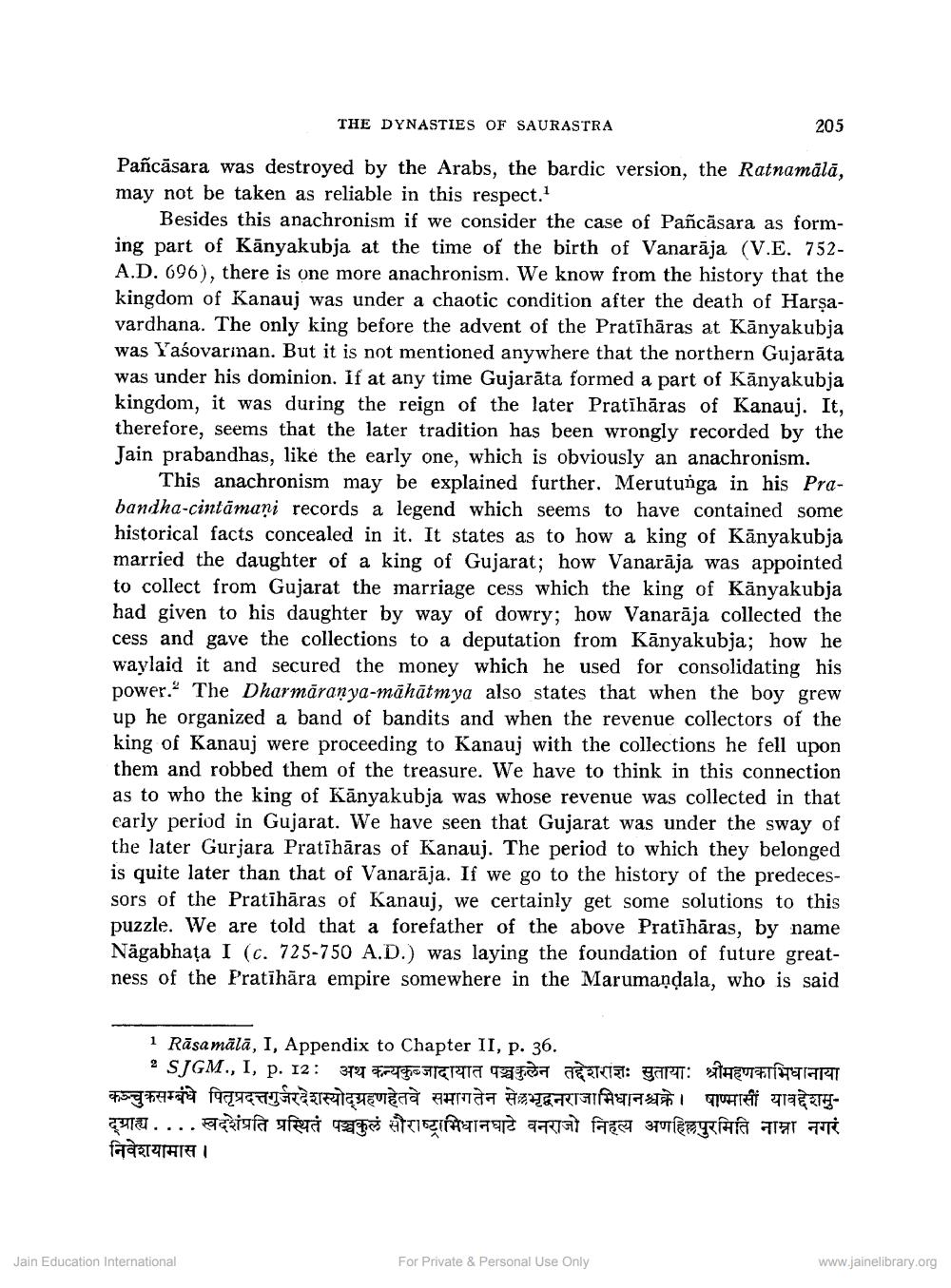________________
THE DYNASTIES OF SAURASTRA
205
Pañcāsara was destroyed by the Arabs, the bardic version, the Ratnamālā, may not be taken as reliable in this respect.'
Besides this anachronism if we consider the case of Pañcāsara as forming part of Kānyakubja at the time of the birth of Vanarāja (V.E. 752A.D. 696), there is one more anachronism. We know from the history that the kingdom of Kanauj was under a chaotic condition after the death of Harşavardhana. The only king before the advent of the Pratīhāras at Kānyakubja was Yasovarman. But it is not mentioned anywhere that the northern Gujarāta was under his dominion. If at any time Gujarāta formed a part of Kānyakubja kingdom, it was during the reign of the later Pratīhāras of Kanauj. It, therefore, seems that the later tradition has been wrongly recorded by the Jain prabandhas, like the early one, which is obviously an anachronism.
This anachronism may be explained further. Merutunga in his Prabandha-cintāmaņi records a legend which seems to have contained some historical facts concealed in it. It states as to how a king of Kānyakubja married the daughter of a king of Gujarat; how Vanarāja was appointed to collect from Gujarat the marriage cess which the king of Känyakubja had given to his daughter by way of dowry; how Vanarāja collected the cess and gave the collections to a deputation from Kānyakubja; how he waylaid it and secured the money which he used for consolidating his power. The Dharmāranya-māhātmya also states that when the boy grew up he organized a band of bandits and when the revenue collectors of the king of Kanauj were proceeding to Kanauj with the collections he fell upon them and robbed them of the treasure. We have to think in this connection as to who the king of Kānyakubja was whose revenue was collected in that early period in Gujarat. We have seen that Gujarat was under the sway of the later Gurjara Pratihāras of Kanauj. The period to which they belonged is quite later than that of Vanarāja. If we go to the history of the predecessors of the Pratīhāras of Kanauj, we certainly get some solutions to this puzzle. We are told that a forefather of the above Pratihāras, by name Nāgabhata I (c. 725-750 A.D.) was laying the foundation of future greatness of the Pratihāra empire somewhere in the Marumandala, who is said
1 Rāsamälā, I, Appendix to Chapter II, p. 36.
2 SJGM., I, p. 12: 314 3 1grata TE ATISI: garit: ATHEMATITETAART कञ्चुकसम्बंधे पितृप्रदत्तगुर्जरदेशस्योद्ग्रहणहेतवे समागतेन सेलभृद्वनराजाभिधानश्चक्रे। षण्मासी यावद्देशमुग्राह्य . ... स्वदर्शप्रति प्रस्थितं पञ्चकुलं सौराष्ट्राभिधानघाटे वनराजो निहत्य अणहिलपुरमिति नाम्ना नगरं निवेशयामास ।
Jain Education International
For Private & Personal Use Only
www.jainelibrary.org




